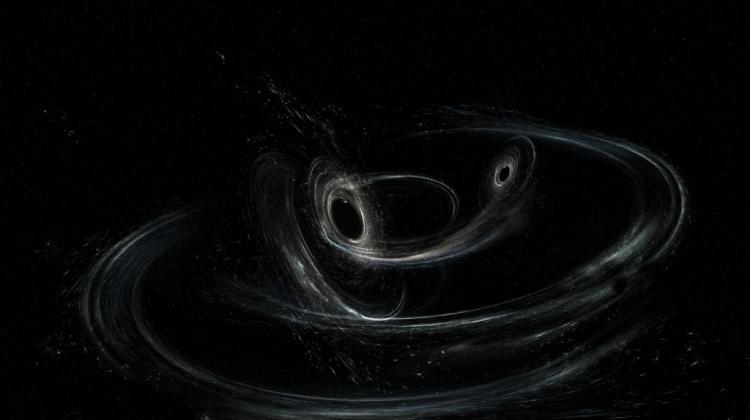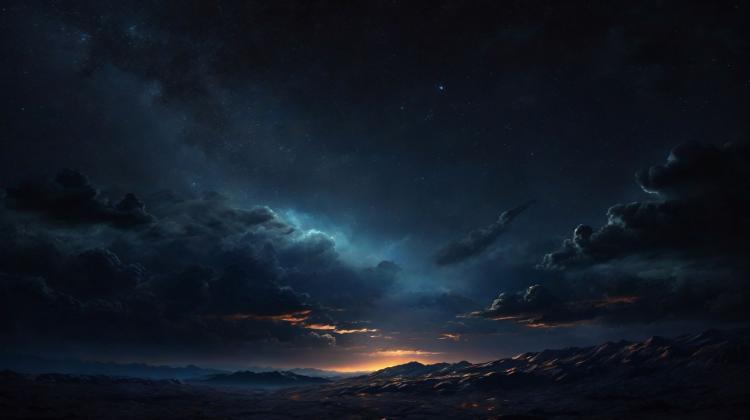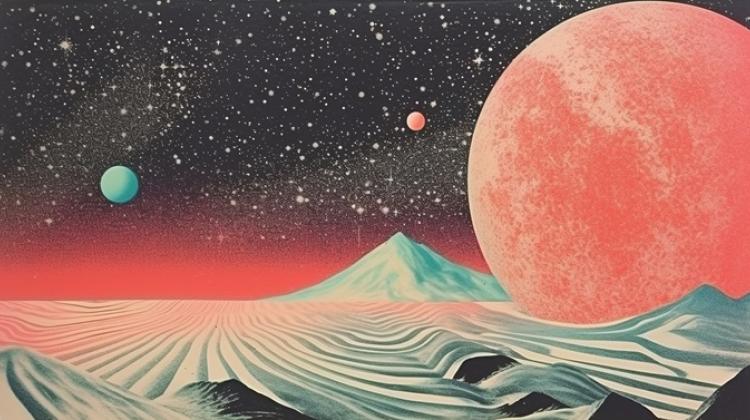Scientists have registered gravitational waves for the third time

The LIGO Observatory has made a third detection of gravitational waves, ripples in space and time predicted by Albert Einstein\'s general theory of relativity.
Caltech and MIT have reported on the discovery, the information about it is also published on the websites of several Polish institutes and the POLGRAW group.
The Laser Interferometer Gravitational-wave Observatory (LIGO) has made a third detection of gravitational waves, ripples in space and time, demonstrating that a new window in astronomy has been firmly opened. Gravitational wave was first detected in September 2015 (the discovery was announced in February 2016), and than for the second time in December 2015.
As was the case with the first two detections, the waves were generated when two black holes collided to form a larger black hole. The resulting object - new, more massive black hole - has a mass about 49 times that of our sun. This puts it between the masses of the two merged black holes detected previously, with solar masses of 62 and 21.
LIGO\'s current observing run began November 30, 2016, and will continue through the summer. It was during this run that the latest detection of gravitational waves took place, more precisely, the phenomenon was registered on January 4, 2017. It was designated GW170104.
In all three cases, the source of gravitational waves was a merger of a black hole pair. The energy in the gravitational waves, triggered during the black holes\' collision, exceeded all electromagnetic radiation from all the stars and galaxies emitted in this fraction of a second.
Scientists estimate that the merger occurred 3 billion light years away from us. This is further than in the previous two cases, when the distances were 1.3 billion and 1.4 billion light years.
The observations also provide clues about the direction in which one of the black holes is spinning. Pairs of black holes spiral around each other, but they also spin on their own axes. Black holes sometimes spin in the same overall orbital direction as the pair is moving, and sometimes they spin in the opposite direction of the orbital motion. It appears that at least one of the black holes in case of GW170104 did not spin according to the orbital motion.
There are two primary models to explain how binary pairs of black holes can be formed. The first model proposes that the black holes are formed together when each star in a pair of stars explodes and then collapses into the black hole. Such black holes will inherit the spin direction of their star predecessors that were spinning in alignment; the black holes are likely to remain aligned. In the other model, the black holes come together later in life within crowded stellar clusters. The black holes pair up after they sink to the centre of a star cluster. In this scenario, the black holes can spin in any direction relative to their orbital motion. The data from LIGO favour the latter theory.
Gravitational waves, commonly referred to as ripples in space and time, are one of the predictions of Einstein\'s general relativity theory, although they had been discussed before that. Gravitational waves carry energy and can be emitted by objects that move with acceleration. To be able to detect them, the body must have very high acceleration and very large mass, for example it can be a binary system of neutron stars or black holes. Therefore, it is not surprising that the first gravitational wave detections involve collisions (mergers) of black holes.
"The important thing is that this new system is at a great distance, about twice further than the previous detections. This makes it possible to verify other predictions of general relativity. We will be able to see whether light is dispersed, whether gravitational waves actually travel at light speed. This is important as a fundamental test of general relativity theory" - explained Prof. Dorota Rosińska from the Institute of Astronomy of the University of Zielona Góra, co-author of the publication presenting research results.
Rosińska also added that thanks to the third phenomenon astronomers can impose restrictions on models of populations of stars that lead to the formation of black holes. The more such events we have, the better restrictions we can impose on the frequency of such events that should occur in the Universe and on the types of models that lead to the formation of two black holes.
The LIGO project started observations in 2002 and continued until 2010. No gravitational waves were detected at that time. In the following years, the observatory was upgraded to increase detection capabilities, and improved detectors began observations in 2015. Two LIGO observatories, Hanford and Livingston, were launched in the United States. The European counterpart to LIGO is the Virgo observatory in Italy near Pisa.
Scientists in Europe and the United States work closely together. The LIGO-Virgo team continues to study and analyse the latest LIGO data. Work on technical improvements is also under way in the next series of observations, which will begin at the end of 2018. The sensitivity of detectors will be improved.
A dozen Polish scientists from various institutes (members of the group Virgo-POLGRAW) also cooperate with the research project LIGO-Virgo that involves more than a thousand scientists from all over the world. The head of the Polish project is Prof. Andrzej Królak from the Institute of Mathematics of the Polish Academy of Sciences. Poland\'s participation in the Virgo project is on the Polish Road Map of Research Infrastructure and it is financed by grants from the Ministry of Science and Higher Education, the National Science Centre and the Foundation for Polish Science.
Polish institutes involved in the research project are the Institute of Mathematics of the Polish Academy of Sciences, the Astronomical Observatory of the University of Warsaw, the Institute of Astronomy of the University of Zielona Góra, the National Centre for Nuclear Research, the Nicolaus Copernicus Astronomical Center in Warsaw, the University of Bialystok, Toruń Centre for Astronomy of the Nicolaus Copernicus University, Institute of Theoretical Physics of the University of Wroclaw, Astronomical Observatory of the Jagiellonian University.
Among the authors of the publication concerning the third detection of gravitational waves there are nine Polish names: Michał Bejger (Nicolaus Copernicus Astronomical Center in Warsaw), Tomasz Bulik (Astronomical Observatory of the University of Warsaw), Andrzej Królak (Institute of Mathematics PAS), Izabela Kowalska-Leszczyńska (Astronomical Observatory of the University of Warsaw), Adam Kutynia (National Centre for Nuclear Research), Dorota Adam Ucroyn (National Centre for Nuclear Research), Piotr Ustron (Institute of Astronomy of the University of Zielona Góra), Piotr Jaranowski (University of Bialystok), Magdalena Sieniawska (Nicolaus Copernicus Astronomical Center in Warsaw), Adam Zadrożny (National Centre for Nuclear Research).
The LIGO project is also linked to the Einstein@Home distributed computing program, thanks to which anyone willing can donate computing power of their computer or smartphone to analyse LIGO data for signals from rotating neutron stars. Einstein@Home also analyses data from other observatories, such as the Arecibo Observatory telescope. At the end of 2016 Einstein@Home had 440 thousand active users.
The paper describing the results of the third gravitational wave detection was published in the journal Physical Review Letters.
PAP - Science and Scholarship in Poland
cza/ zan/ kap/
tr. RL
Przed dodaniem komentarza prosimy o zapoznanie z Regulaminem forum serwisu Nauka w Polsce.

















